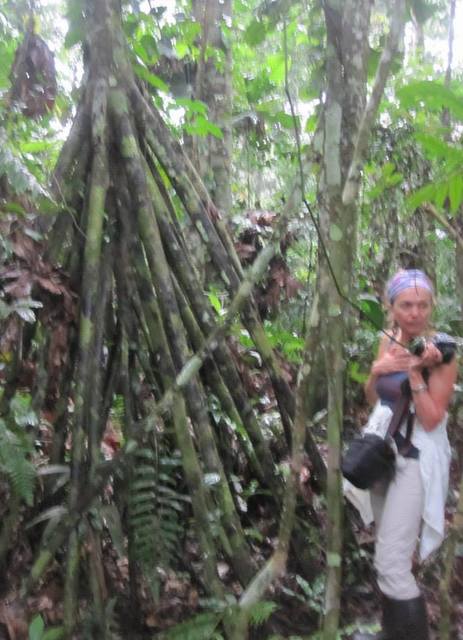The jungle, a word coming from Sanskrit meaning “impenetrable” , is a place where
the competition for light and nutrition is most intense. Only a thin layer of soil is
fertile. Light hardly penetrates through the thick green foliage. Plants had to develop
survival strategies. The interdependence between different species is a crucial factor
for survival.
A good example is the Ficus or Banyan Tree, one of the most important trees in the
Rain Forest. The sweet fruits feed hundreds of animals – like toucans, monkeys,
gibbons, bats. The Ficus, also called Strangler Fig, starts at the beginning of it’s
growth as a seedling -which was eaten by a bird – high up on a branch of a tree.
Here, the seedling gets light, rain and nutrition from leaf litter. Slowly, they develop
roots which grow far down to the soil. A network of roots encircle the host tree. After
awhile, the host tree is strangled by the roots. The Ficus is a canopy tree and can
reach up to 148 feet.
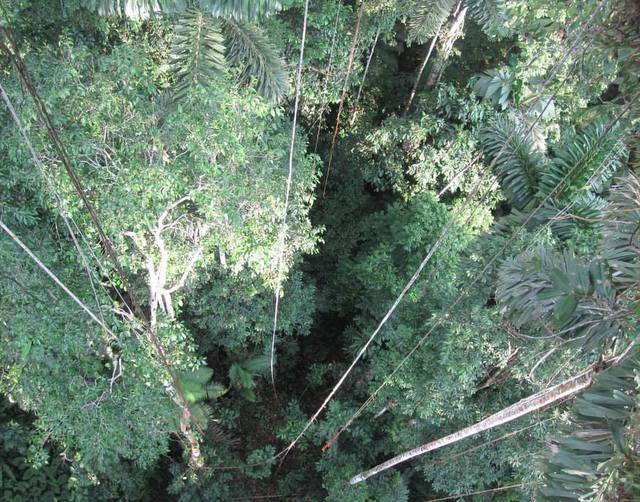
View down from a platform mounted in a fig tree
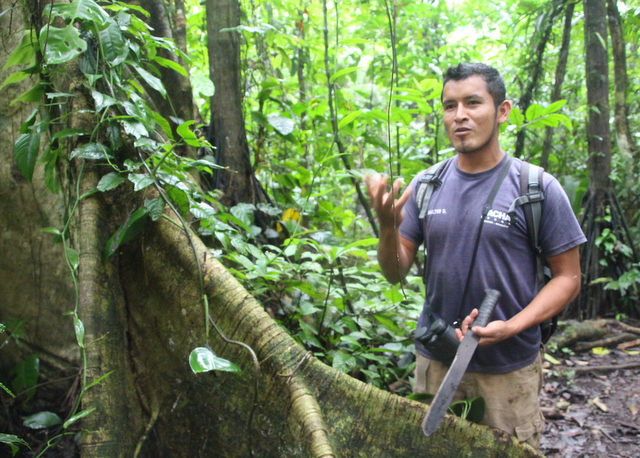
Walter, our Quichuan guide with a machate
The Walking Tree is another unique plant in the Rain Forest. This palm tree moves
by developing roots where it finds light and nutrition and lets the roots die which are
of no use anymore.
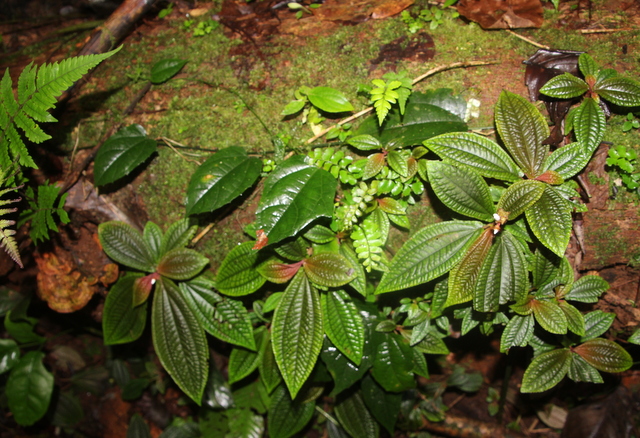
Many plants growing on the roots of a tree
Roots of a walking tree
Bromeliads live on branches and trunks of rain forest trees. Their base can hold up
to two gallons of water. It is a mini ecosystem. For many creatures, like frogs,
tadpoles, salamanders, snails……it serves as a home. The droppings left and the
animals that die and decompose serve as a nutrition for the plant.
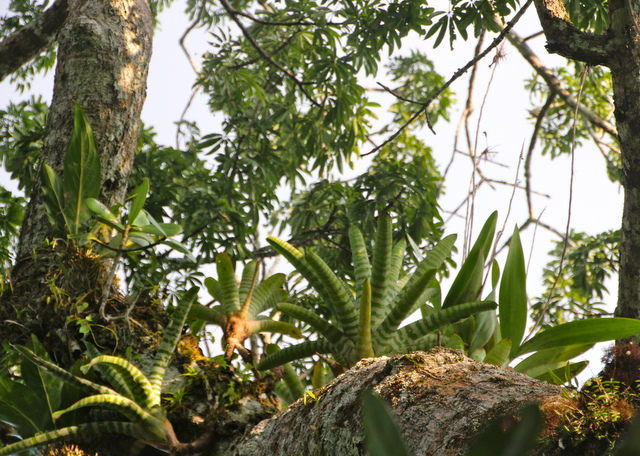
Bromeliads on a tree branch; photo from a platform high up in the tree
The leaf cutter ants form, beside humans, the largest and most complex animal
societies on Earth. Their underground nest can reach down to about 100 feet.
The ants cultivate a fungus by feeding it with the leaves. This fungus is food for the
ant larvae. They both need each other to stay alive.
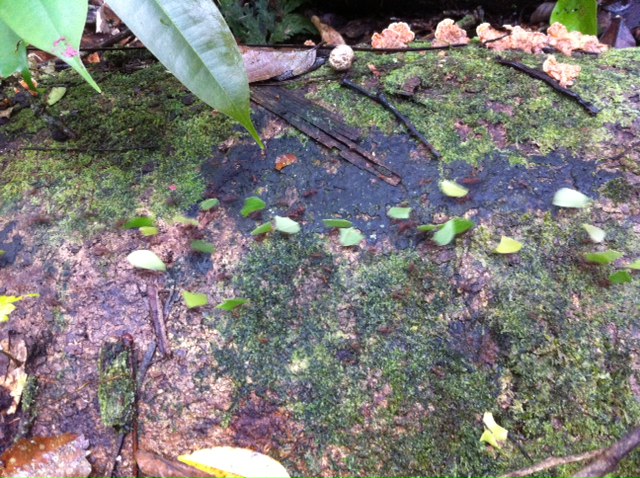
A busy highway of leaf cutter ants
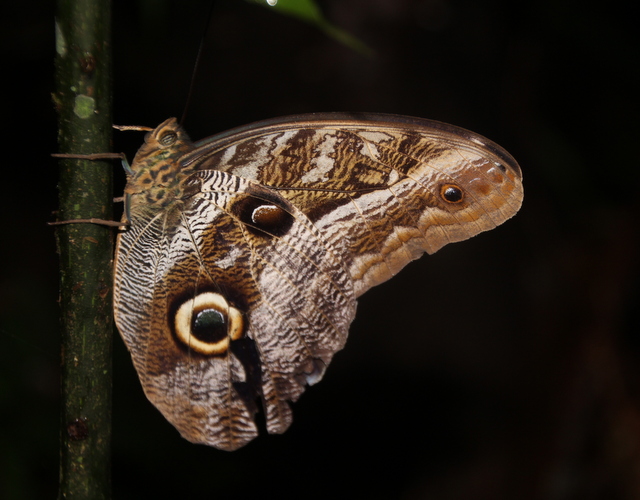
A butterfly with an image of a snake on his wings for protection
– The text and pictures contributed by Garyo –

